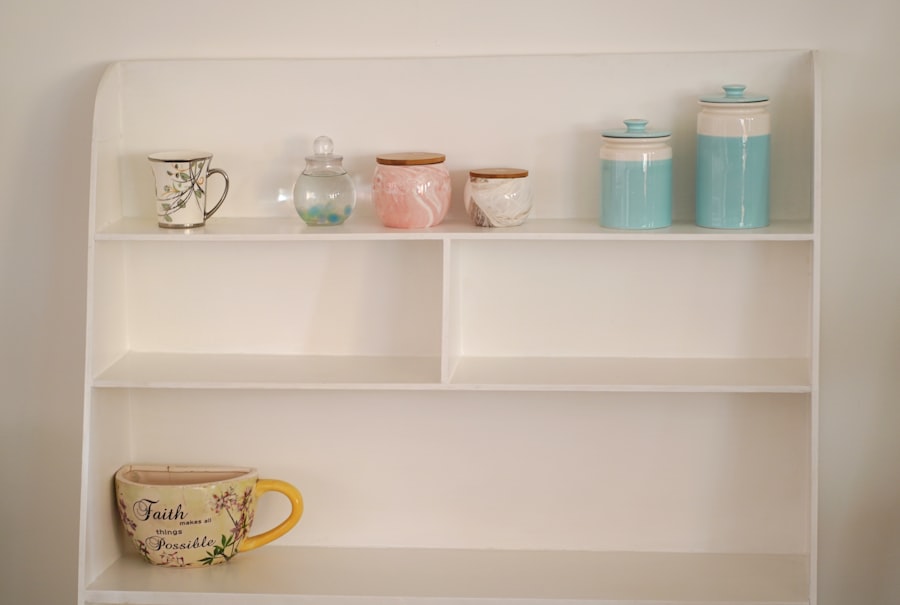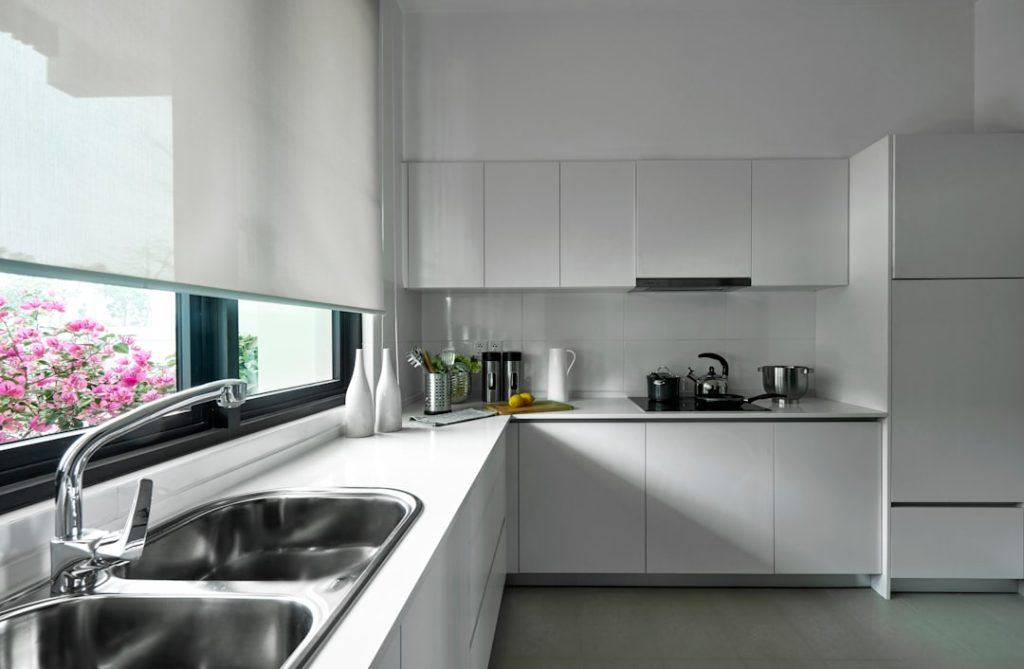Custom kitchen cabinets serve as the backbone of any kitchen, providing not only storage but also a sense of style and functionality. Unlike pre-manufactured options, custom cabinets are tailored to fit the unique dimensions and layout of your kitchen, ensuring that every inch of space is utilized effectively. This is particularly important in smaller kitchens where maximizing storage can significantly enhance usability.
Custom cabinets allow homeowners to create a personalized environment that reflects their tastes and meets their specific needs, making them an essential component of kitchen design. Moreover, the importance of custom kitchen cabinets extends beyond mere aesthetics and functionality. They can significantly influence the overall value of a home.
Potential buyers often view a well-designed kitchen as a major selling point, and custom cabinetry can elevate the perceived quality of the space. By investing in custom cabinets, homeowners not only improve their daily living experience but also make a strategic investment in their property’s marketability. The ability to customize features such as shelving, drawer sizes, and finishes means that these cabinets can adapt to changing needs over time, further enhancing their value.
Key Takeaways
- Custom kitchen cabinets are important for maximizing storage and functionality in the kitchen.
- Designing custom kitchen cabinets can help maximize space and create a more organized and efficient kitchen.
- Custom kitchen cabinets play a significant role in enhancing the overall aesthetic and design of the kitchen.
- Opting for custom kitchen cabinets can be a sustainable and eco-friendly choice for your home.
- Choosing the right materials for custom kitchen cabinets is crucial for durability and longevity.
Designing Custom Kitchen Cabinets to Maximize Space
When it comes to designing custom kitchen cabinets, one of the primary goals is to maximize available space. This involves careful planning and consideration of the kitchen’s layout, including the placement of appliances, countertops, and existing architectural features. For instance, corner cabinets can be designed with pull-out shelves or lazy Susans to make accessing items easier, while tall cabinets can extend up to the ceiling to utilize vertical space effectively.
This approach not only increases storage capacity but also minimizes clutter, creating a more organized and functional kitchen environment. In addition to optimizing storage, custom cabinet design can incorporate innovative solutions tailored to individual lifestyles. For example, a family that frequently cooks may benefit from deep drawers for pots and pans, while someone who enjoys baking might prefer specialized compartments for baking sheets and mixers.
The inclusion of features such as built-in spice racks or pull-out trash bins can further enhance convenience and efficiency. By taking into account the specific needs and habits of the homeowner, custom kitchen cabinets can transform a standard kitchen into a highly functional workspace that caters to everyday activities.
The Role of Custom Kitchen Cabinets in Enhancing the Aesthetic of Your Kitchen

Custom kitchen cabinets play a pivotal role in defining the aesthetic appeal of a kitchen. They serve as a focal point that can set the tone for the entire space, whether it be modern, traditional, rustic, or contemporary. The choice of materials, colors, and finishes allows homeowners to express their personal style while ensuring that the cabinets harmonize with other elements in the kitchen.
For instance, sleek, high-gloss finishes may complement a minimalist design, while distressed wood can enhance a farmhouse aesthetic. Furthermore, custom cabinetry offers the opportunity for intricate detailing that mass-produced options often lack. Features such as crown molding, decorative hardware, and unique door styles can add character and sophistication to the kitchen.
The ability to customize cabinet heights and widths also allows for creative design solutions that can make a kitchen feel more spacious or intimate, depending on the desired effect. By thoughtfully integrating these design elements, custom kitchen cabinets can elevate the overall ambiance of the space, making it not just functional but also visually stunning.
Custom Kitchen Cabinets: A Sustainable and Eco-Friendly Option
| Metrics | Data |
|---|---|
| Material | Wood, Bamboo, Reclaimed Wood |
| Energy Efficiency | Energy Star Rated Appliances |
| Water Efficiency | Low-flow Faucets |
| Recyclable | Yes |
| Longevity | Durable and Long-lasting |
In an era where sustainability is increasingly prioritized, custom kitchen cabinets can be an eco-friendly choice for homeowners looking to reduce their environmental impact. Many manufacturers offer options made from sustainable materials such as bamboo or reclaimed wood, which not only minimize deforestation but also contribute to a healthier indoor environment. Additionally, custom cabinets can be designed with energy-efficient features such as LED lighting or low-VOC finishes that reduce harmful emissions.
The longevity of custom kitchen cabinets also plays a significant role in their sustainability. Unlike mass-produced options that may need replacement after a few years due to wear and tear, high-quality custom cabinets are built to last. This durability means fewer resources are consumed over time for replacements and repairs.
Furthermore, by choosing local artisans or manufacturers for custom cabinetry, homeowners can support local economies while reducing transportation emissions associated with shipping products over long distances.
Choosing the Right Materials for Your Custom Kitchen Cabinets
Selecting the right materials for custom kitchen cabinets is crucial for achieving both durability and aesthetic appeal. Common materials include hardwoods like oak, maple, and cherry, which are known for their strength and timeless beauty. These woods can be stained or painted in various finishes to match any design scheme.
Plywood is another popular choice due to its stability and resistance to warping, making it an excellent option for cabinet boxes. In addition to traditional materials, there are also innovative options available that cater to modern sensibilities. For instance, engineered wood products such as MDF (medium-density fiberboard) offer a smooth surface ideal for painting and are often more affordable than solid wood.
Additionally, laminate finishes provide a wide range of colors and patterns while being easy to clean and maintain. When choosing materials, it’s essential to consider factors such as budget, desired aesthetics, and how well each material will withstand the rigors of daily use in a busy kitchen environment.
Custom Kitchen Cabinets: A Wise Investment for Your Home

Investing in custom kitchen cabinets is often seen as a wise financial decision for homeowners looking to enhance their property’s value. A well-designed kitchen with high-quality cabinetry can significantly increase a home’s resale value, making it an attractive feature for potential buyers. According to various real estate studies, kitchens are one of the most scrutinized areas during home inspections; thus, having custom cabinetry can set a home apart in a competitive market.
Moreover, the return on investment (ROI) for kitchen remodels is typically high compared to other home improvement projects. Homeowners can expect to recoup a significant portion of their investment when selling their home if they have made thoughtful upgrades in this area. Custom cabinets not only improve functionality but also contribute to an overall sense of luxury and quality that resonates with buyers.
This makes them not just an expense but rather an investment in both comfort and future financial gain.
The Process of Creating Custom Kitchen Cabinets
The journey toward acquiring custom kitchen cabinets begins with careful planning and consultation with professionals who specialize in cabinetry design. This process typically starts with an assessment of the existing kitchen layout and an understanding of the homeowner’s needs and preferences. Designers will often take precise measurements to ensure that every cabinet fits perfectly within the designated space while considering factors such as workflow and accessibility.
Once the initial consultation is complete, designers will present various options regarding styles, materials, finishes, and hardware choices. This collaborative approach allows homeowners to visualize how different elements will come together in their kitchen. After finalizing the design details, skilled craftsmen will begin constructing the cabinets using high-quality materials and techniques tailored to ensure durability and aesthetic appeal.
The installation process follows, where precision is key to achieving a seamless integration into the existing kitchen structure.
Maintenance and Care for Your Custom Kitchen Cabinets
To ensure that custom kitchen cabinets remain in excellent condition over time, proper maintenance and care are essential. Regular cleaning with mild soap and water can help prevent buildup from cooking oils and food particles that may accumulate on surfaces. It’s advisable to avoid harsh chemicals or abrasive cleaners that could damage finishes or wood surfaces.
For wooden cabinets, periodic application of furniture polish or wax can help maintain their luster while providing an additional layer of protection against moisture. In addition to routine cleaning, homeowners should be mindful of humidity levels in their kitchens since excessive moisture can lead to warping or damage over time. Using exhaust fans during cooking or ensuring proper ventilation can mitigate these risks.
Furthermore, addressing any minor repairs promptly—such as tightening loose hinges or replacing worn-out hardware—can prolong the life of custom cabinets significantly. By investing time in maintenance practices, homeowners can enjoy their beautiful custom cabinetry for many years while preserving its functionality and aesthetic appeal.



